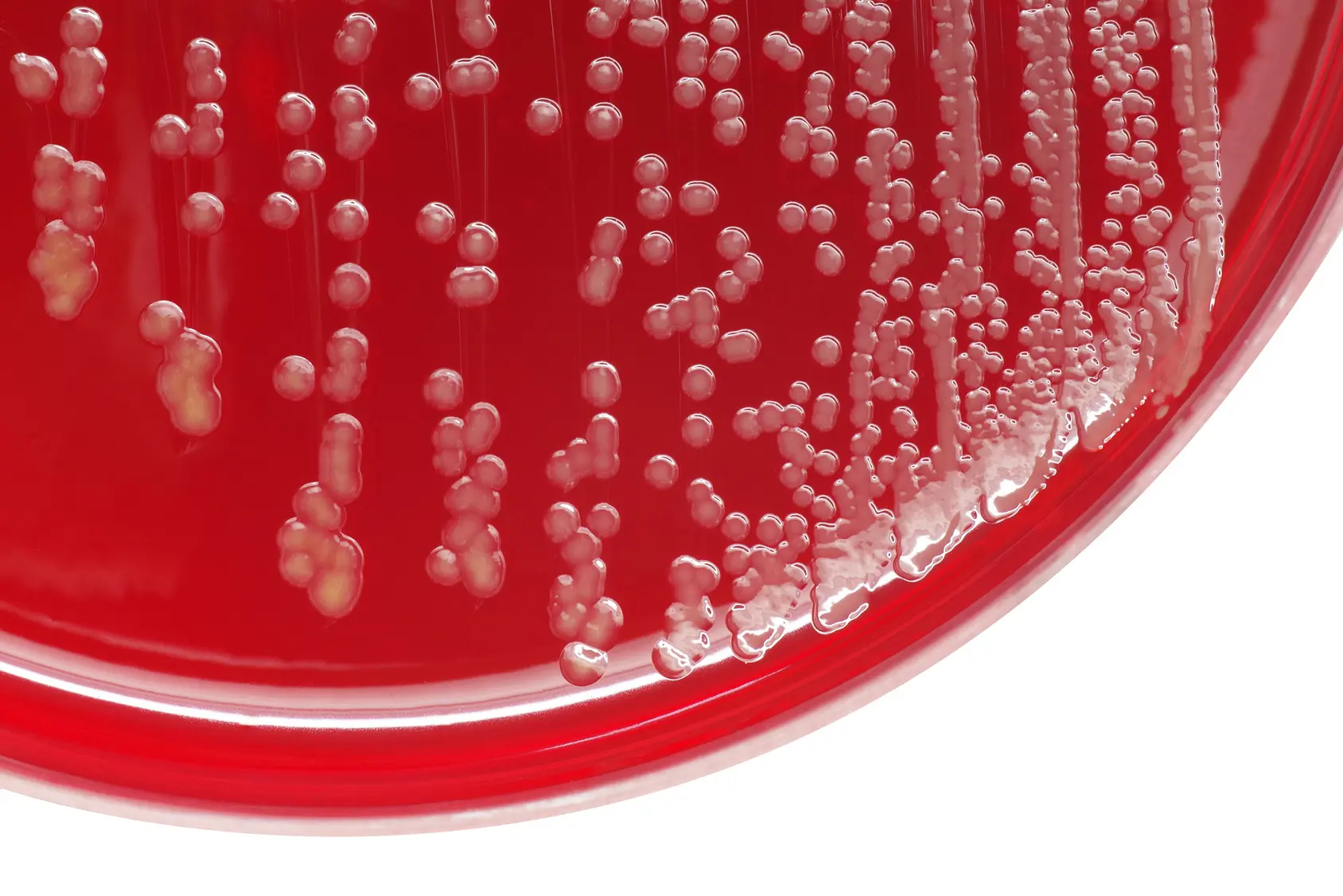In a world where global warming and long-distance travel quickly spread infectious diseases like COVID-19, innovative germ-killing coatings for hospitals could save lives. AMiCI, a COST Action, has developed a database that helps regulators, manufacturers and healthcare providers to safely introduce the technology, while a COST Innovators Grant is supporting scientists to commercialise bug-beating breakthroughs.
Millions of people worldwide catch infectious diseases from hospitals and other healthcare settings – over 4 million people each year in the EU alone, according to the European Centre for Disease Prevention and Control. These sometimes-lethal infections are mainly transmitted via surfaces such as beds or tables, which are also a source of infection for viruses like COVID-19.
Above: Staphylococcus aureus bacterial colonies on blood agar plate
Anti-microbial coatings (AMC) are a possible solution. Active ingredients like copper or special chemical compounds protect walls, bed curtains and other surfaces, killing or repelling bacteria and viruses.
The COST Action “Anti-Microbial Coating Innovations to Prevent Infectious Diseases” (AMiCI) is making it easier for manufacturers and hospitals to make full use of these coatings. The network of over 60 institutes and companies from 33 European countries has developed a database of active ingredients in AMCs, an overview of current European research, and advice on designing safe products.
AMiCI has also identified issues with testing methods and approval processes in Europe and prepared guidelines for combining the coatings with best cleaning practice to optimise hospital hygiene.
“Before COVID-19, [hospital-acquired infection] was an urgent issue. Now, sadly, more people are waking up to it,” says the Action Chair, Dr Minna Keinänen-Toivola of Satakunta University of Applied Sciences in Finland.
Making Europe pandemic-ready
The environmental scientist explains that in severe cases of viral disease like COVID-19, patients can develop secondary bacterial infections in their lungs. She believes that lessons from COVID-19 will include better use of microbe-resistant coatings: “We have to be prepared. This will not be the last pandemic.”
AMiCI could make a real difference to pandemic-readiness. The network will present its results to Members of the European Parliament (MEPs), after they are published in the respected Journal of Hospital Infection. The information can then spread out to national and EU regulators, the gatekeepers who ensure that AMCs are safe for humans and the environment and do not create antimicrobial-resistant ‘super bugs’, says Keinänen-Toivola.
AMiCI could also help to improve testing standards, for more effective products. For example, in one project, a researcher created a new testing model that mimics hospital conditions more closely than existing conditions, giving researchers a better idea of how well a coating will work in real life.
Finally, the network’s guidelines for designing and using coatings provide a short-cut to researchers who want products to be easy to clean, cost-effective and durable – essential for busy, cash-strapped hospitals.
Many of these concrete results are thanks to input from producers, suppliers and potential users of AMC, standards organisations and EU research funders
“The Action was based on science, cooperation and discussion on how the Action relates to real life, to bring innovation to the market,” says Keinänen-Toivola.
Above: AMiCI Final Action conference in Krakow, Poland in February 2020
Awarded a COST Innovators Grant
Although AMiCI ended in April 2020, many of the Action members have formed a group which has won a COST Innovators Grant. The aim is to develop an online platform to help researchers commercialise anti-microbial innovations.
The platform includes information and scientific mentoring on potential coatings that can be tested and how to get these to different markets. It also explains how to register an invention, access financing and scale up to mass production through new field and pilot tests.
“Great science is being done but people don’t know how to turn it into products,” Keinänen-Toivola says.
In particular, the platform will target young researchers, researchers from less-research-intensive countries and women from AMiCI, followed by a call on social media. It will also publish lectures and videos on YouTube and social media that will be available to all.
Keinänen-Toivola adds that the COST Action will shortly release a YouTube video of some of its young researchers’ achievements and is looking forward to future successes. “The Grant doesn’t just maintain the AMiCI network, it expands it.”
Further information


